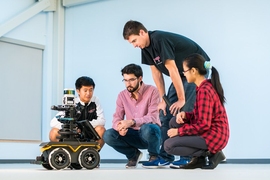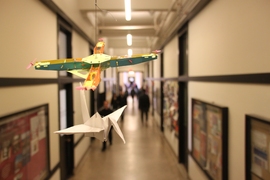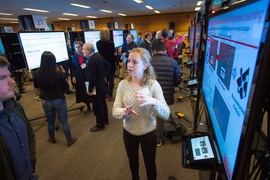A new report from MIT puts a spotlight on worldwide trends in the changing landscape of engineering education, pinpoints the current and emerging leaders in the field, and describes some of its future directions.
“Engineers will address the complex societal challenges of the 21st century by building a new generation of machines, materials, and systems. We should fundamentally rethink how we educate engineers for this future,” says Ed Crawley, the Ford Professor of Engineering in the Department of Aeronautics and Astronautics and faculty co-director of the New Engineering Education Transformation (NEET) initiative at MIT.
This realization, Crawley says, is what prompted MIT’s engineering faculty to rethink how they were approaching their own offerings on campus, and to launch NEET. “We’re targeting MIT education at the industries of the future rather than industries of the past,” says Anette “Peko” Hosoi, associate dean of engineering and Crawley’s co-lead at NEET; Hosoi is also the Neil and Jane Pappalardo Professor of Mechanical Engineering.
While their on-campus pilot was at the design stage, Crawley decided to take a broader, benchmarking view. “I knew from my five years as founding president of Skoltech in Moscow that there were examples of educational innovation scattered across the world,” he says, “but these distributed developments are difficult to identify and learn from.”
Until now. Crawley and his colleagues in the NEET program have just released “Global state of the art in engineering education.” The report, authored by Ruth Graham, is a global review of cutting-edge practice in engineering education. It is informed by interviews with 178 thought leaders with knowledge of and experience with world-leading engineering programs, combined with case studies from four different universities. The report paints a rich picture of successful innovation in engineering education as well as some of its opportunities and challenges.
The study identifies institutions considered to be the current leaders in engineering education; Olin College and MIT were cited by the majority of experts who were consulted, along with Stanford University, Aalborg University in Denmark, and Delft University of Technology (TU Delft) in the Netherlands. Outside of the U.S. and northern Europe, the only university among the top 10 cited for their educational leadership was the National University of Singapore (NUS).
“The profile of the emerging leaders is very different,” Graham notes. “While they include universities in the U.S. and Europe — Olin College, Iron Range Engineering, and University College London are among the most frequently cited universities – thought leaders identified emerging leaders from across the world, such as Singapore University of Technology and Design (SUTD), Pontifical Catholic University of Chile (PUC), NUS (Singapore), and Charles Sturt University (Australia).” (The report includes case studies of four of the emerging leaders: SUTD, UCL, Charles Sturt, and TU Delft.)
The study attributes this contrast to a range of sources. For one, Graham notes, “Many political leaders outside of the U.S. are making major investments in engineering education as an incubator for the technology-based entrepreneurial talent that will drive national economic growth.”
The report also identifies some key challenges facing engineering education, and in some cases higher education as a whole. These include aligning the goals of national governments and higher education, delivering student-centered learning to large student cohorts, and setting up faculty appointment and promotion systems that better reward high-quality teaching.
According to Graham’s report, three trends are likely to define the future of engineering education. The first is a tilting of the global axis of engineering education leadership so it is less focused on U.S. and northern European institutions. The second is a shift toward programs that integrate student-centered learning with a curriculum oriented to the pressing challenges of the 21st century — societal, environmental, and technological. And the third is the emergence of a new generation of leaders with the capacity to deliver student-centered curricula at scale.
The case studies highlighted in the report include universities that may be paving the way by, for example, achieving curricular coherence and integration through a connective spine of design projects. In the longer-term, the world’s leading engineering programs may be those that blend off-campus personalized learning, accessed online as students need it, with experiential learning both in work-based placements and on campus.










